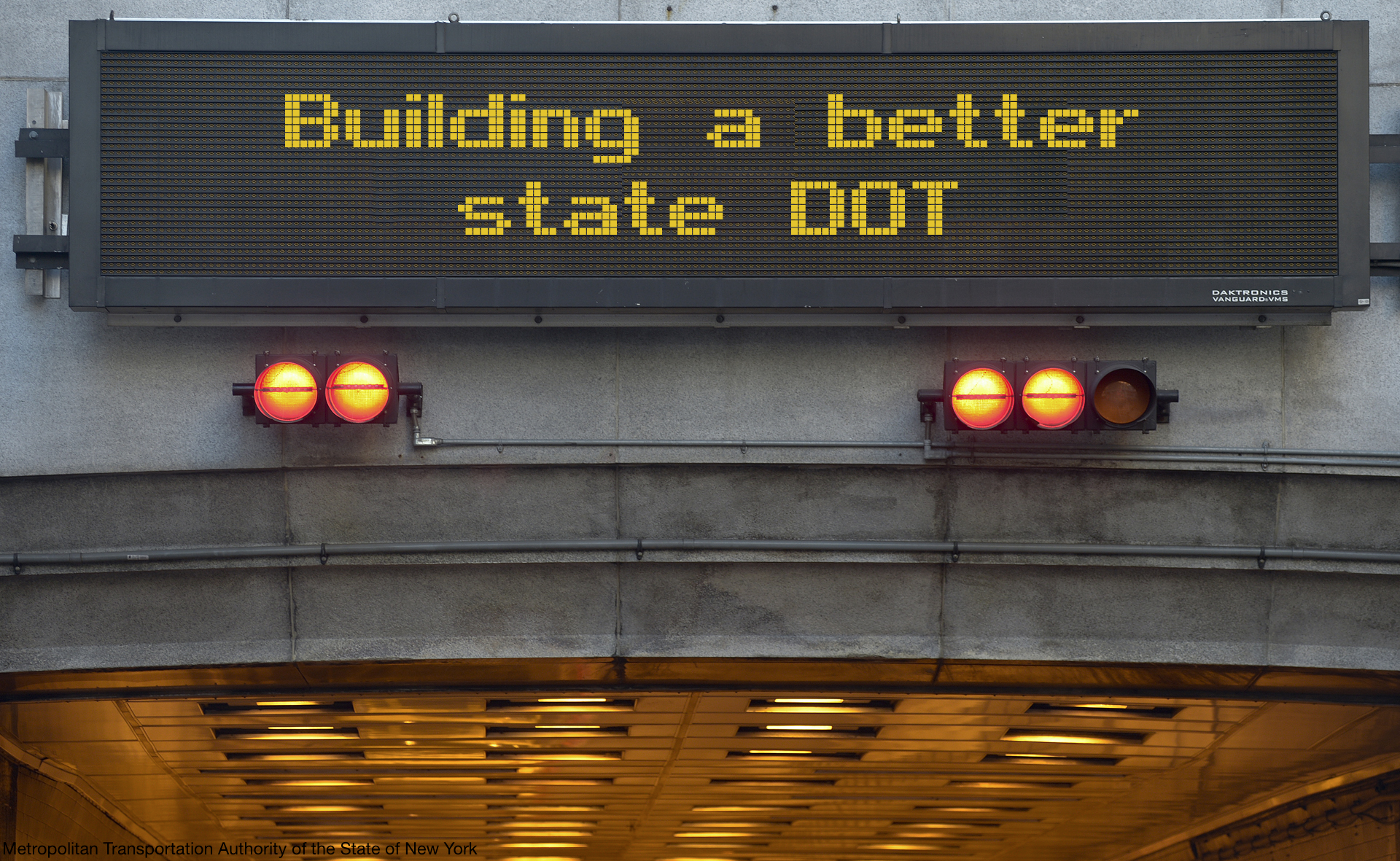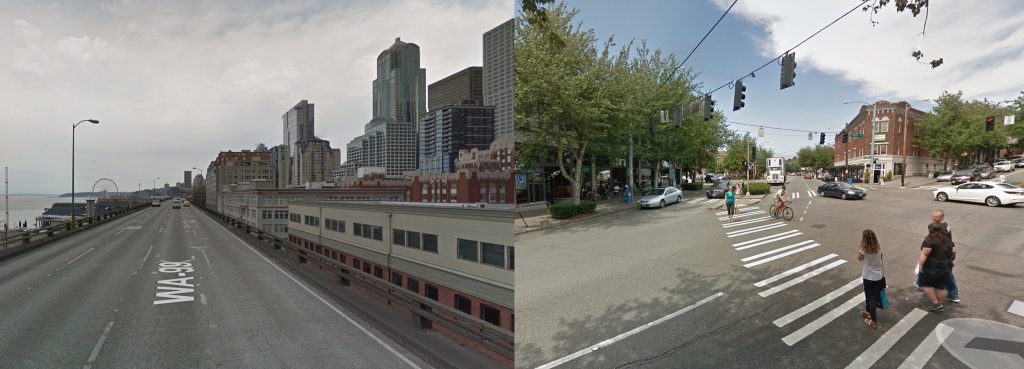
Over the last two years, Smart Growth America has been working to help a small group of state departments of transportation question and assess the underlying assumptions that lead many states toward giant highway solutions for every transportation problem.
This post is the first of a short series about states that are finding success through what’s known as practical solutions, a way for transportation departments to meet changing demands and plan, design, construct, operate, and maintain context-sensitive transportation networks that work for all modes of travel. Read the second post here.
Most state departments of transportation were created largely for one reason: to implement a highway-building program.
And that’s just what they did for many decades, with sometimes ruthless efficiency, building ever wider and more complicated roadways with funding streams that were increasing year over year as we drove more and the gas tax brought in more money each year. And while advocates certainly raised their voices in objection, the highway-building machine chugged along—as long the money kept pouring in.
Then something started happening in the early 2000’s: Those revenues started flagging because driving declined in a significant way (despite projections by the feds and states that driving would continue on the same impossible upward trajectory into infinity), and the fleet of vehicles became far more fuel efficient.
All of a sudden state DOTs had a fiscal imperative to do more with less and find ways to be more efficient. This was combined with demographic shifts and consumer preferences spurring a move back into downtowns of all sizes, the explosion of growth in new or expanded transit systems, and the rise in the popular consciousness of improving walkability.
And then many states hit a wall.
Why? Because these organizations with highway-building DNA embedded deep in their culture were now being asked to do far more than they once did: Build and/or operate transit, make multimodal connections, focus on moving people instead of just vehicles, make walking and biking safer options, and build things that results in fewer emissions, to name a few.
Or put more bluntly, the same department that delivered this highway below on the left a few decades ago is the same one tasked with delivering the street on the right, perhaps right in front of your house.

So why bother with the state DOT?
The simple answer is that they are still in charge of spending the bulk of the dollars that get invested in transportation, and that’s not likely to change soon. Though some believe that working to influence state DOT spending is like rearranging the deck chairs on the Titanic, until some new system comes to replace them, state DOTs will continue to make the bulk of the decisions about our transportation dollars.
At Smart Growth America, we’re not willing to let the perfect be the enemy of the much better. We’re far too pragmatic and know that real long-term change is often achieved incrementally.
On top of that, in our work with states across the country, we’ve found that many states are actually eager for a better way of doing business. Some states are frustrated by institutional inertia, by long-since-approved Complete Streets policies that aren’t yet producing safer streets, by once-small projects that somehow mutate and grow unnecessarily in scope and cost, by decades-old plans for unbuilt highways that still continue to hover like ghosts over every conversation about what to build and where.
Numerous governors have also been coming into office having made promises about focusing on mobility and moving people first and foremost, only to discover after inauguration that their “transportation” agency is in fact just a highway agency that’s poorly suited to fulfilling their pledges to the public. They’re making goals but they lack the tools to deliver them.
We have found states that are eager to figure out a better way and find innovative and flexible ways to meet users’ needs that cost less to build and maintain. And over the last two years, we’ve worked to help them identify barriers and find solutions. These are the states to keep your eye on, they’re going to figure it out first.
Over the next few weeks, we’re going to explain how it’s possible for a tiger to change its stripes, how some are leading the way, and the regular obstacles that keep cropping up and need to change.
Let’s build a better state DOT.
Read the second post of this series: How a singular focus on speed leads state DOTs to overspend and overbuild >>
The Governors’ Institute on Community Design, a program of Smart Growth America, helps state leaders address economic development, housing, transportation, and other pressing issues that relate to how communities grow and develop. Visit www.govinstitute.org for more information.
The Governors’ Institute has developed the Accelerating Practical Solutions program to help transportation agencies meet changing demands on their systems by defining the transportation problem to identify the most cost-effective solution to that problem. The program aims to build internal capacity to plan, design, construct, operate, and maintain context-sensitive transportation networks that work for all modes of travel. This series was developed with the support of the U.S. Environmental Protection Agency and U.S. Department of Transportation.